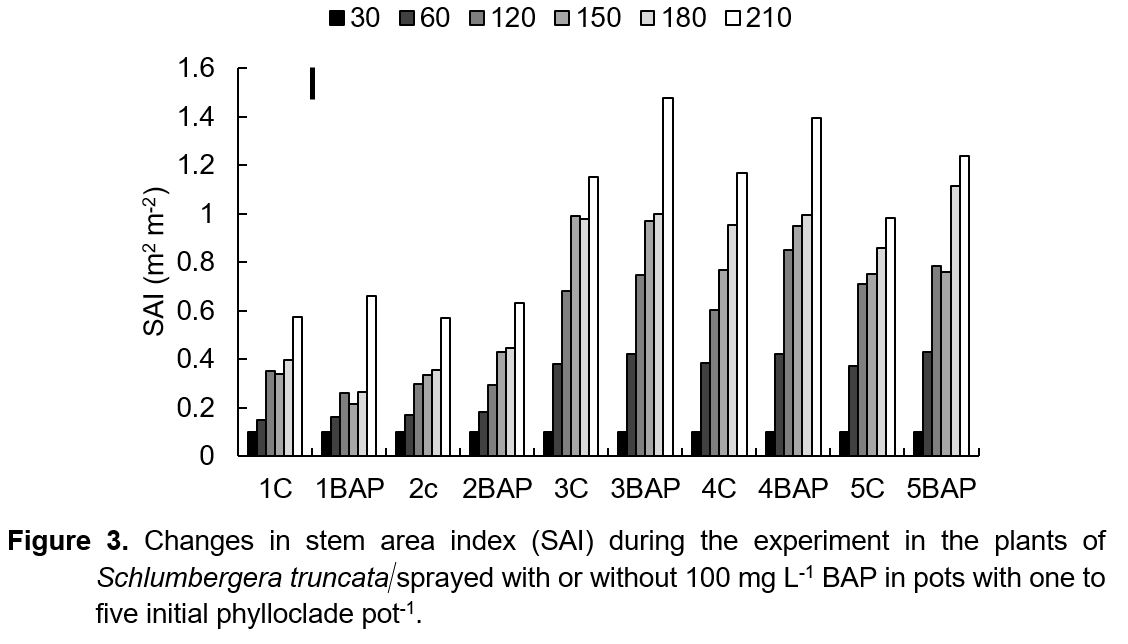Biomass accumulation of Schlumbergera truncata (Haw.) Moran (Thanksgiving cactus) grown under high pot density
DOI:
https://doi.org/10.56890/jpacd.v23i.331Keywords:
cactus growth, cytokinin, pot cropping, space competitionAbstract
The growth of most pot-grown succulents offered by the ornamental industry is limited mainly by water, nutrients, photoperiod, and temperature manipulation, while other decisions, such as: plant density at pot cropping are often based on the grower’s experience. In the present study, to optimize the biomass accumulation of Schlumbergera truncata under high pot density, we performed an experimental design that included different numbers of initials phylloclades and spraying or not with the synthetic cytokinin 6-benzylaminopurine (BAP). The highest biomass accumulation on a fresh weight basis and highest stem area expansion were recorded in pots with five initial phylloclades and BAP-sprayed plants. The decrease in individual biomass accumulation and the expansion of steam area were related to an increase in pot density. Since shading effect can be discard, responses to photo-assimilate uptake and distribution more associated with mechanical constraints on pot roots rather than with a competition between individual roots. Our results suggest that, when Schlumbergera truncata is grown in pots, the number of initial phylloclades may be higher than the usually recommended number per pot.
Publication Facts
Reviewer profiles N/A
Author statements
Indexed in
- Academic society
- Journal of the Professional Association for Cactus Development
- Publisher
- Professional Association for Cactus Development




